What Is Measuring Tape: Simple Guide For Accurate Custom Orders
Welcome! This simple guide will help you understand measuring tapes. Our goal is to make learning about them straightforward and easy for everyone:
Here’s what we will cover:
- What a measuring tape is.
- Why it’s so useful.
- The different kinds of measuring tapes you can find.
- How to read one without any confusion.
Knowing how to measure is very handy for everyday tasks, and it’s especially important when ordering custom items. This guide will help you get your custom packaging or labels just right, ensuring a perfect fit for your products. Accurate measurement for custom products is key!
1. What exactly is a measuring tape?
1.1. Defining a measuring tape in simple words
A measuring tape is a tool. We use it to find out how long, wide, or tall something is. Think of it as a flexible ruler that helps you determine an item’s size.
It’s usually a long, thin strip. This strip can be made of different things like soft fabric, flexible plastic, or a harder metal. On this strip, you see lines and numbers. These are called marks. These marks indicate measurements, such as inches or centimeters, allowing us to determine an object’s size.
1.2. The main job: why we use them
The primary purpose of a measuring tape is to determine an object’s size. It’s a very common measurement tool.
For example, you can use it to see if a new table will fit in your kitchen. Or, if you are making something, like a bookshelf or sewing clothes, you use it to cut your wood or fabric to the right size. It helps us make sure things are the correct size, so they work properly or look good. Knowing the purpose of a measuring tape helps ensure accurate sizing for product fit and material cutting.
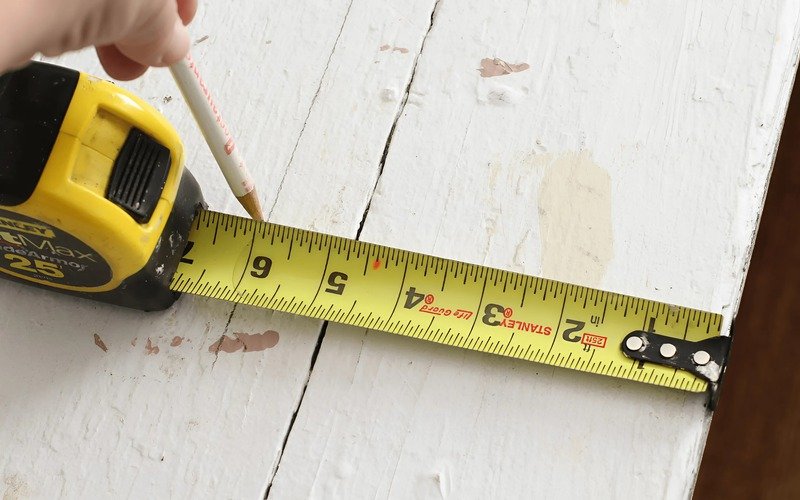
2. Why accurate measurements are super important
2.1. Everyday benefits of measuring right
The importance of accurate measurement is evident in many daily tasks.
- Shopping: When you buy clothes, measuring helps you choose the size that fits you best. For furniture, it helps you know if it will fit in your room.
- Home DIY: If you want to hang a picture, measuring helps you put it in the right spot and make it straight. For small DIY measuring projects, like putting up a shelf, good measurements mean it will be strong and look nice.
- Crafts: When you do crafts, like craft measuring for a greeting card, measuring helps you cut pieces to the correct size so they fit together well.
Measuring right helps you avoid problems. This means no more clothes that don’t fit or projects that don’t work out. The benefits of measuring correctly are clear.
2.2. Getting custom things perfect: the role of good measurement
When ordering custom items, accurate measurements are crucial. This applies to custom labels, special bags, or tags for your designed clothes. Ensuring accuracy in custom orders is key.
Incorrect measurements can result in custom items that are too big or too small, don’t fit your product correctly, or don’t meet your aesthetic expectations. This can waste time and money, so avoiding custom order mistakes is vital.
At Packlove, we want your custom items to be perfect for you. When you order Woven Labels (a label made by weaving threads together, like on clothing necklines), Heat Transfer Labels (a label applied to fabric using heat and pressure, often tagless), Rubber Labels, Zipper Bags, or Poly Mailers from us, giving us precise measurements is the first step to ensuring your Packlove items are sized correctly.
For example, imagine you order beautiful Woven Labels for your handmade scarves. If you measure the space on the scarf where the label will go, and you measure it wrong, the label might cover too much of your scarf. Or it might look tiny and lost. Woven Label dimensions and Heat Transfer Label placement are very important. The same applies to Zipper Bag sizes and Poly Mailer sizing.
We’ve helped many creators and businesses at Packlove. We know that when measurements are precise, the final custom packaging and labels look fantastic and work perfectly.
Ready to get your custom items perfectly sized? Explore our range of custom labels or contact our team for design assistance.
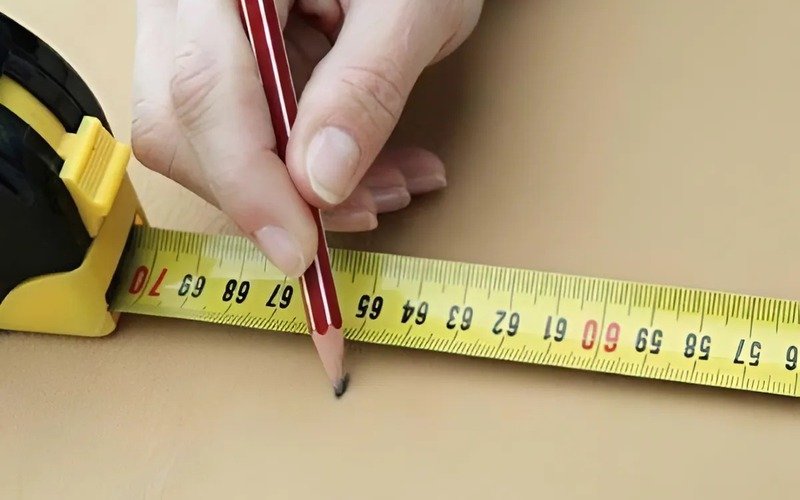
3. Common places and ways we use measuring tapes
3.1. Around the house and for hobbies
Measuring tapes are useful in many everyday scenarios.
- Home: You might use a measuring tape to see if a new desk will fit in your room. Or to measure a window for new curtains. This is common for measuring for home projects.
- Sewing/tailoring: If you like to sew, a soft measuring tape is essential for sewing measurements. You use it to measure your body or fabric.
- Crafts: For craft project measuring, like making boxes, a tape helps cut parts to the right size.
- Gardening: Some use it in gardening to space plants correctly.
3.2. For business and online sellers
For businesses, especially online sellers, accurate measurements are vital. You need to provide customers with product sizes, and a measuring tape helps determine the length, width, and height (dimensions) for your product descriptions.
Carefully measuring your product ensures you select the ideal packaging size, like these Poly Mailers, for optimal protection and shipping efficiency. You need to know what size poly mailer fits your item to ensure correct shipping and packaging.
When ordering custom items like Woven Labels, Heat Transfer Labels, or Zipper Bags from Packlove, measure your products carefully. This ensures your custom labels fit perfectly and your custom bags are the right size. For example, correctly using a measuring tape for custom label sizes will ensure your brand label looks professional and fits well.
If you’re applying Heat Transfer Labels to t-shirts, measure the shirt to determine the correct application size. This helps you communicate the precise size and placement to us.
Many businesses that order from Packlove use measuring tapes every day. It helps them list products correctly, choose the best shipping supplies, and design amazing custom packaging. Knowing how to measure for Packlove orders is a skill that pays off.
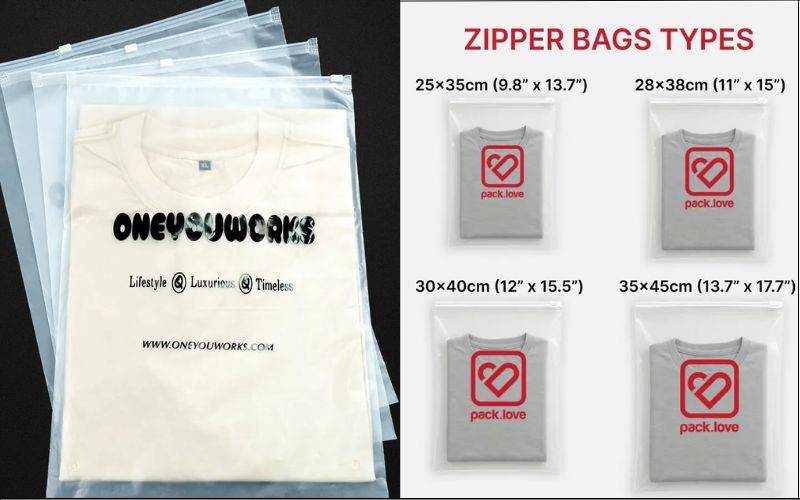
4. Different kinds of measuring tapes
4.1. The main types you’ll see
Retractable metal tape measure
A retractable metal tape measure, featuring a durable steel blade that coils into a compact case, ideal for measuring flat surfaces and construction tasks.
- Material: Metal (often steel).
- Features: It rolls into a case. A spring pulls it back. Most have a button to lock the tape. A small metal hook at the end catches edges. Some have a self-locking mechanism (keeps the tape out until a button is pressed).
- Best for: Measuring flat surfaces like walls, wood, or tables. They are strong.
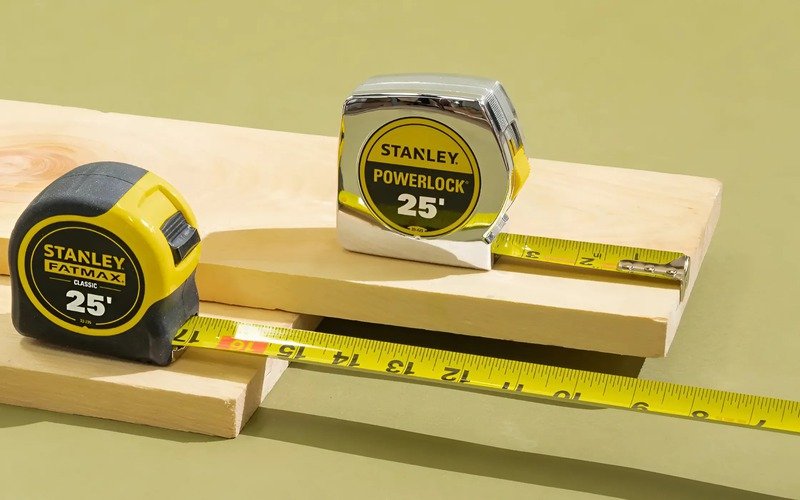
Soft measuring tape (tailor’s tape / sewing tape)
A soft measuring tape (a flexible tape, often used for sewing), also called tailor’s tape or sewing tape, is made from soft, flexible material.
- Material: Coated fabric or soft plastic.
- Features: Bends easily for measuring curves. Often has numbers on both sides (e.g., inches on one side and centimeters on the other – known as dual-sided printing). Its flexibility is a key feature.
- Best for: Body measurements, fabric, or measuring round objects.

Other types (briefly)
- Surveyor’s tape (a very long tape measure for land): For very long distances, like measuring land.
- Adhesive tape measures (sticker-like tapes with measurements): You can stick them onto a workbench.
4.2. What to look for when picking one
When choosing a measuring tape, consider these best measuring tape features:
- Units: Which measurement units does it show? Inches, centimeters, or both? Dual-sided printing is handy.
- Length: What length do you need? Short for crafts, long for rooms.
- Durability & material: For rough jobs, a strong tape measure material like metal is good. For sewing, durable plastic or fiberglass.
- Readability: Are numbers and lines clear? An easy to read measuring tape has good contrast.
- Flexibility vs. rigidity: Need it flexible (soft tape) or rigid (metal tape)?
For most everyday tasks, and for measuring your products before ordering custom items from Packlove (like our Labels or Zipper Bags), having one good retractable metal tape and one soft tailor’s tape is highly recommended.
5. How to read a measuring tape: a simple step-by-step
5.1. Understanding the lines and numbers
The lines and numbers on a measuring tape show you the length or size. Reading measuring tape marks is easy with practice.
Look closely. It will usually say ‘in’ or ‘inch’ for inches, and ‘cm’ for centimeters. The longest lines usually mark main numbers (1 inch, 1 cm). Shorter lines show smaller parts.
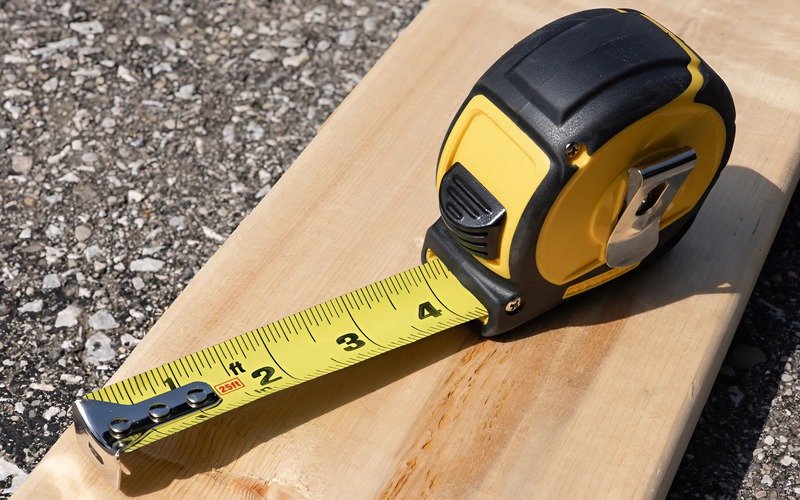
5.2. Reading inches
Here’s how to read inches on tape measure, part of the imperial system measurements.
Whole inches: Look for big numbers (1, 2, 3). These have the longest lines.
Between each whole inch, smaller lines divide it into fractions.
- The line in the middle is the 1/2 (half) inch mark.
- Lines dividing into four parts are 1/4 (quarter) inch marks (1/4, 1/2, 3/4).
- Shorter lines divide into eight parts: 1/8 (eighth) inch marks.
- The shortest lines often divide into sixteen parts: 1/16 (sixteenth) inch marks.
To read:
- Find the last whole inch before your point.
- Count how many smallest fraction lines (e.g., 1/16th) past that whole inch.
Example: Past 2 inches, lining up with the 5th 1/16th mark is 2 and 5/16 inches.
5.3. Reading centimeters and millimeters
For how to read centimeters on tape measure (part of the metric system measurements):
Centimeters (cm): Look for numbers 1, 2, 3. These have long lines.
Millimeters (mm): Smaller lines between centimeter marks.
There are 10 millimeters in 1 centimeter. Each small line is 1 mm. The line halfway is 5 mm (0.5 cm).
Here’s how:
- Find the last whole centimeter before your point.
- Count small millimeter lines past it.
Example: Past 5 cm, lining up with the 3rd small line is 5 cm and 3 mm (5.3 cm).
5.4. Where to start measuring from
Knowing where to start measuring from is important for accuracy:
- Soft tapes: Start from the very end. The ‘0’ (zero) mark is at the edge.
- Metal tapes with a hook: Measurement typically starts from the inside edge of the metal hook when pulling, or the outside edge when pushing. The hook itself is designed to account for its own thickness (see FAQ 8.4). Always start from the correct zero point.
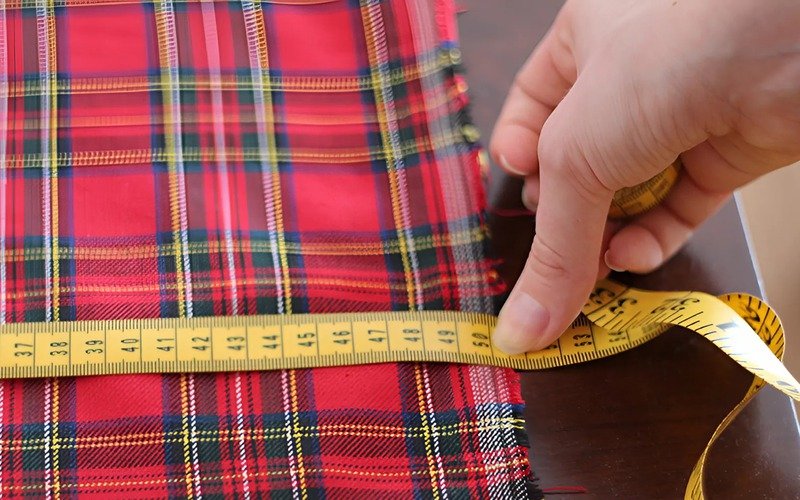
6. Quick tips for getting accurate measurements
Here are some tips for accurate measuring and best practices:
- Measure twice: Check measurements twice before cutting or ordering. This helps catch mistakes.
- Keep tape flat: Ensure it’s flat and straight. No sagging or twisting.
- Inside measurements: For inside measurements (e.g., inside a box), ensure the tape is pushed firmly into the corner. For retractable metal tapes, you can bend the tape into the corner, or if it has a case dimension printed on it, butt the case against one side and add that dimension to the tape reading.
- True zero for metal tapes: The hook is designed to be the ‘true zero’. Ensure it’s properly hooked over an edge for outside measurements and pushed flush against a surface for inside measurements (the hook will slide to compensate for its own thickness).
- Read carefully: Look straight down at the mark to avoid measurement mistakes.
7. Measuring tapes and your Packlove custom items
Knowing about measuring tapes helps when measuring for Packlove custom items! For our Woven Labels, Heat Transfer Labels, Rubber Labels, Zipper Bags, and Poly Mailers, getting the dimensions (length, width, height/thickness) right for Packlove custom sizes is vital.
Using your tape correctly helps you provide us with precise sizes. This means your custom labels, tags, or packaging will fit perfectly. Using a measuring tape helps your Packlove custom items fit.
For example, measuring your product (like jam or soap) helps choose the right size for your custom **Zipper Bags**. Zipper Bag dimensions Packlove should ensure a good fit. For Heat Transfer Labels on t-shirts, understanding how to use a measuring tape for accurate heat transfer placement ensures a professional look for Heat Transfer Label placement Packlove. The same principle applies to sizing for Woven Labels and Poly Mailers from Packlove.
Following our Packlove measurement guides (if available on our site) is highly recommended. Our Value Booster Kit can also help. After you measure, compare to samples in the Value Booster Kit sizing section to visualize.
Measuring with a tape helps ensure correct custom sizes for Packlove orders, avoiding common sizing mistakes for custom packaging and labels.
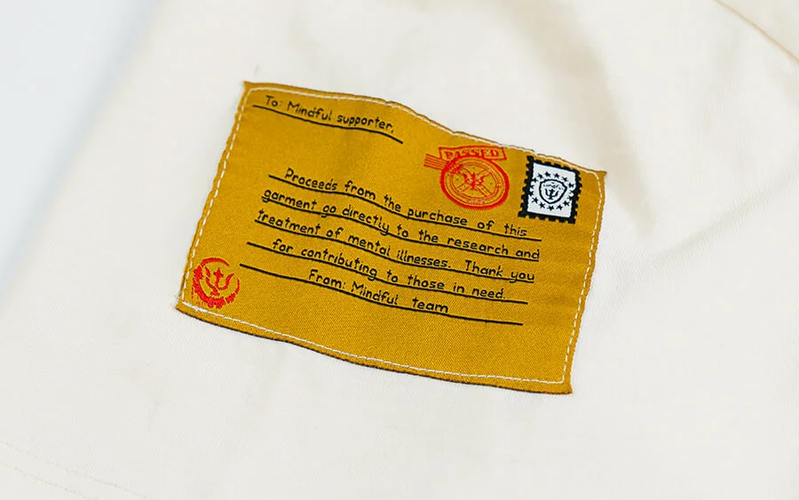
8. Frequently asked questions (FAQs) about measuring tapes
8.1. What do the little diamond shapes on some metal tape measures mean?
Those diamond marks (often black) found at 19.2-inch intervals on some metal tape measures are primarily for builders, aiding in tasks like spacing engineered joists or trusses (dividing an 8-foot span into five equal sections). Standard stud markings (often red or highlighted numbers) are typically at 16-inch and 24-inch intervals. For most everyday measuring, you won’t need the diamond marks.
8.2. My tape measure has inches on one side and cm on the other. Which should I use?
That’s useful! It depends on your project. Some craft patterns use cm. Many home projects in some countries use inches. For Packlove orders: You can give us measurements in inches OR centimeters. Just tell us which unit. Getting comfortable reading both inches and cm on a tape measure is beneficial.
8.3. How do I care for my measuring tape?
For good measuring tape care:
- Keep it clean and dry.
- For metal retractable tapes, guide it back gently. Don’t let it snap hard.
- Store it carefully so it doesn’t get bent or crushed.
8.4. Why does the hook at the end of my metal tape wiggle a little bit?
That tape measure hook wiggle is smart! The hook moves by its own thickness.
- When hooked on an edge (outside/pull measure), the zero point is the hook’s inside.
- When pushed against an inside surface (inside/push measure), the zero point is the hook’s outside.
- This ensures a true zero tape measure reading every time!
Read more:
A measuring tape is a simple yet very useful tool. Now you know what it is, why it’s important, and how to read one. With practice, you can achieve confident measuring! Knowing how to measure helps with many projects. It’s especially key for getting custom items made to accurate custom dimensions. We hope this guide helps you feel ready to measure!






















